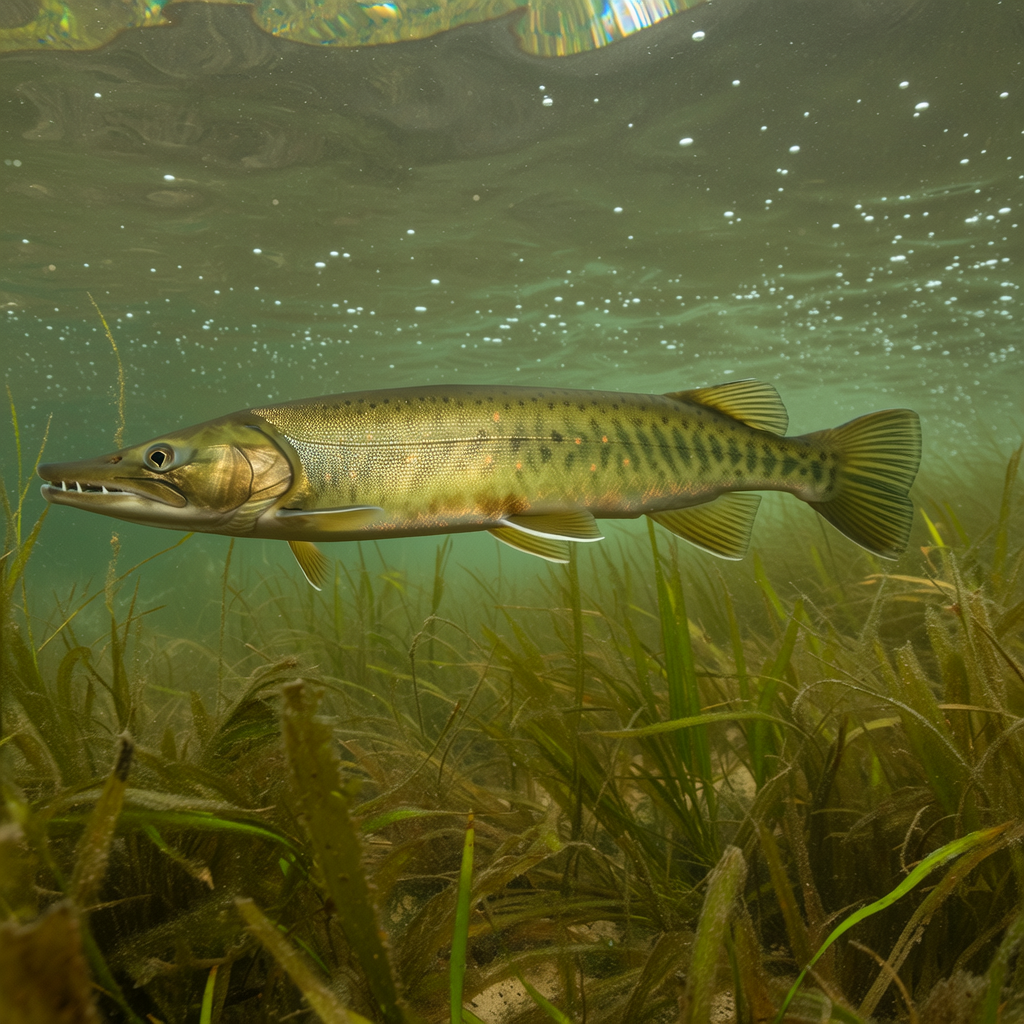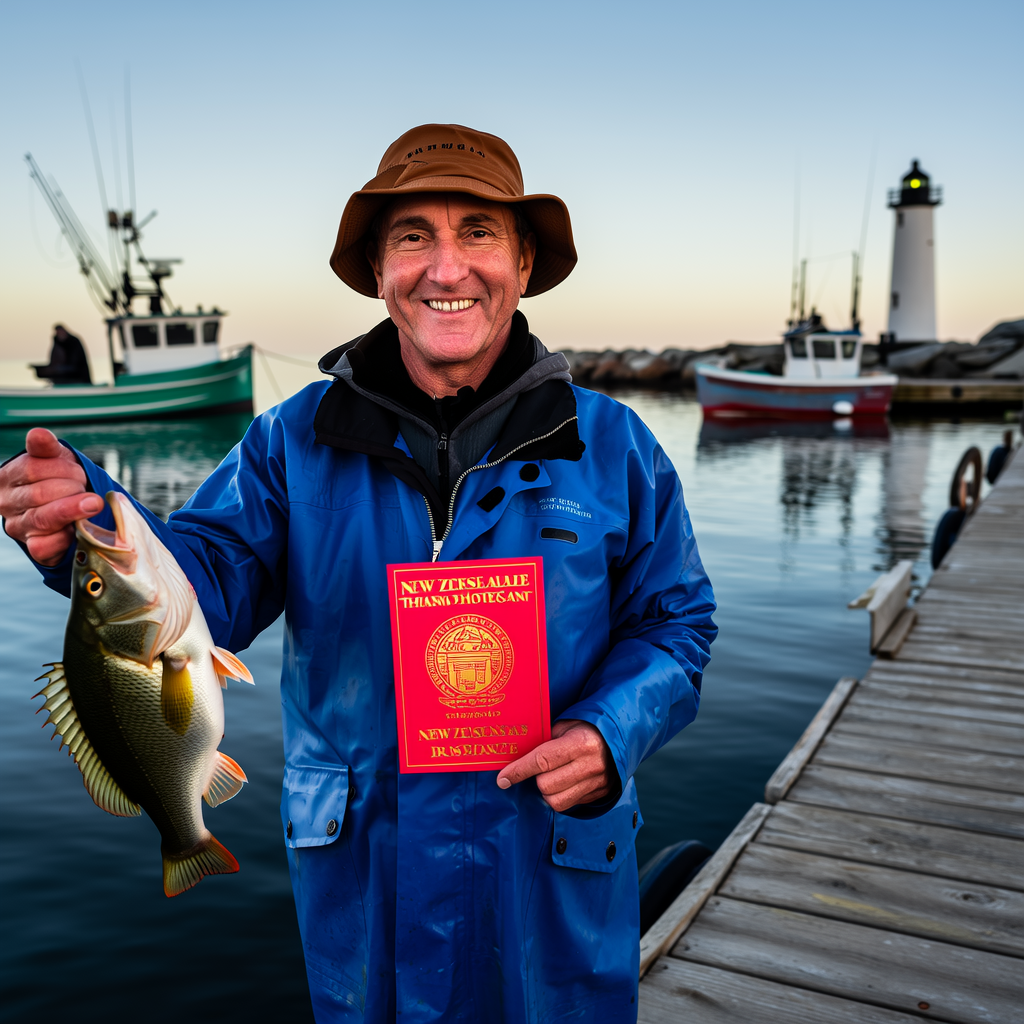Bowfin: The Ancient Freshwater Fish with a Story to Tell
The bowfin (Amia calva) is a remarkable creature that has roamed Earth’s waters for millions of years. Often referred to as “living fossils,” these prehistoric fish offer a glimpse into the evolutionary history of aquatic life. In this article, we will delve deep into the world of bowfin, exploring their anatomy, behavior, habitats, and ecological importance.
What Makes Bowfin Unique?
Among all freshwater fish, bowfin stand out due to their distinctive features and survival strategies. These fish belong to the family Amiidae and are one of the few remaining members of an ancient lineage that dates back over 150 million years.
Anatomy of a Bowfin
A closer look at the physical characteristics of bowfin reveals fascinating adaptations that have allowed them to thrive across millennia. Their elongated bodies can reach lengths of up to 30 inches, making them formidable predators in their natural environments.
One defining feature of the bowfin is its long dorsal fin, which spans nearly two-thirds of its body length. This adaptation enhances swimming efficiency, allowing the fish to navigate through dense vegetation and murky waters effortlessly.
In addition to their streamlined shape, bowfin possess powerful jaws lined with sharp teeth designed for capturing prey. Their mouths open wide enough to swallow large meals whole, showcasing their predatory prowess.
The Role of Coloration
Bowfin exhibit striking color patterns that serve both camouflage and communication purposes. Males often display vibrant hues during breeding seasons, while females maintain more subdued tones year-round. This sexual dimorphism plays a crucial role in attracting mates and ensuring successful reproduction.
Habitat and Distribution
Bowfin inhabit a wide range of freshwater ecosystems throughout North America. From slow-moving rivers to stagnant swamps, these resilient fish adapt seamlessly to diverse conditions.
Freshwater Ecosystems
These fish prefer warm, shallow waters rich in aquatic vegetation. Swamps, marshes, and floodplains provide ideal habitats where bowfin can hide from predators and ambush unsuspecting prey.
Interestingly, bowfin possess a specialized swim bladder that functions as a primitive lung. This adaptation allows them to extract oxygen directly from the air when water quality deteriorates, enabling survival even in low-oxygen environments.
Geographical Range
The geographical distribution of bowfin stretches across much of eastern North America, extending from southern Canada down to Florida. While they are most commonly found in the Mississippi River basin, populations also exist in isolated pockets along the Atlantic coast.
This broad range highlights the species’ ability to endure varying climatic conditions, further cementing its reputation as a versatile survivor.
Behavioral Traits
Understanding the behavioral tendencies of bowfin provides valuable insights into their daily lives and interactions within aquatic communities.
Predatory Habits
As opportunistic feeders, bowfin consume a varied diet consisting of smaller fish, insects, crustaceans, and amphibians. Their stealthy hunting techniques involve lying motionless among aquatic plants before launching surprise attacks on passing prey.
This ambush strategy minimizes energy expenditure while maximizing feeding success, contributing to the overall efficiency of their lifestyle.
Reproductive Patterns
During springtime, bowfin engage in elaborate courtship rituals that culminate in spawning events. Male bowfin construct nests by clearing debris from submerged surfaces, creating safe havens for developing eggs.
After fertilization occurs, males diligently guard the nests until hatching takes place, demonstrating strong parental care instincts rarely seen among other fish species.
Ecological Significance
Beyond their captivating individual traits, bowfin play vital roles in maintaining healthy freshwater ecosystems. By regulating populations of smaller organisms, they contribute to balanced food webs and nutrient cycles.
Keystone Species
Some ecologists consider bowfin keystone species because of their influence on surrounding biodiversity. Their presence helps control pest outbreaks and promotes diversity by preventing any single species from dominating.
Furthermore, bowfin aid decomposition processes by consuming dead organic matter, thereby recycling nutrients back into the environment.
Indicator of Water Quality
Due to their tolerance for poor water conditions, bowfin act as indicators of ecosystem health. High concentrations of pollutants or declining oxygen levels may not immediately harm these hardy fish but could signal impending dangers for less resilient species.
Monitoring bowfin populations offers scientists critical data points for assessing environmental changes and implementing conservation measures.
Threats to Bowfin Populations
Despite their resilience, bowfin face numerous threats that jeopardize their continued existence. Human activities such as habitat destruction, pollution, and overfishing pose significant challenges to their survival.
Habitat Loss
Drainage projects aimed at converting wetlands into agricultural lands destroy essential habitats required by bowfin for reproduction and shelter. Restoring degraded areas remains crucial for preserving viable populations.
Additionally, invasive species introduced into native waters compete with bowfin for resources, exacerbating competition pressures already present.
Conservation Efforts
To combat these threats, various organizations advocate for sustainable management practices that prioritize coexistence between human needs and wildlife preservation. Educational campaigns raise awareness about the importance of protecting bowfin and similar species.
Research initiatives focus on understanding population dynamics and identifying key factors affecting growth rates, helping inform policy decisions at local and national levels.
Fishing for Bowfin
For anglers seeking an exciting challenge, targeting bowfin presents a rewarding experience filled with action-packed moments. Equipped with knowledge about their behaviors and preferences, enthusiasts increase their chances of success.
Tackle Recommendations
Using medium-heavy rods paired with spinning reels loaded with 15-20 pound test line proves effective for handling robust fights typical of caught bowfin. Artificial lures mimicking minnows or frogs entice strikes, while live bait options like nightcrawlers or small fish produce excellent results.
Patience and persistence remain key attributes necessary for consistent catches, as bowfin sometimes prove elusive despite apparent abundance in certain locations.
Ethical Considerations
When pursuing bowfin, responsible fishing practices ensure minimal impact on wild stocks. Catch-and-release methods allow captured specimens to return unharmed, promoting sustainability efforts aligned with conservation goals.
Respecting size limits and seasonal restrictions set forth by regulatory agencies safeguards future opportunities for enjoyment while safeguarding fragile ecosystems.
Cultural Relevance
Throughout history, indigenous peoples recognized the value of bowfin as sources of sustenance and cultural significance. Traditional stories passed down through generations highlight respect for nature’s gifts embodied by these ancient fish.
Modern Perspectives
Today, bowfin continue inspiring admiration among researchers, educators, and casual observers alike. Documentaries and publications dedicated to profiling their remarkable qualities bring attention to overlooked aspects of aquatic life deserving recognition.
Efforts to integrate traditional ecological knowledge with modern science foster collaborative approaches toward addressing shared concerns about biodiversity loss and climate change impacts.
Conclusion
From their extraordinary anatomical features to their integral contributions to freshwater ecosystems, bowfin exemplify the wonders of evolution preserved in living form. As stewards of our planet’s natural heritage, it falls upon us to protect and celebrate these magnificent creatures so future generations may marvel at their enduring legacy.
By fostering greater appreciation for bowfin and supporting conservation initiatives, we honor their place in Earth’s rich tapestry of life. Let us commit ourselves to nurturing harmony between humanity and the wondrous beings sharing our world.




